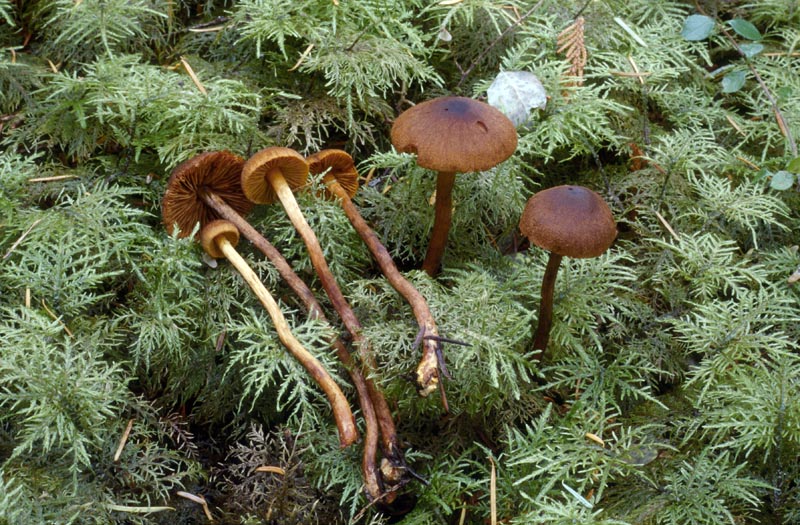Habitat: C. aurantiobasis tends to occur in wetter habitats with conifers, often near western hemlock and/or Sitka spruce, and frequently among sphagnum or other mosses.
Conservation Status: Not of concern
In C. aurantiobasis, the cap is distinctly orange-brown to red-brown, sometimes with a darker brown center, usually has a distinct umbo, and the margin is finely fibrillose-scaly. The gills are rich yellow to orange-yellow with yellow edges, and they develop strong orange to brownish tones with age. The stipe is equal but often tapered at the base, with a yellowish surface above, and the lower portion and particularly the base rich watery orange. The flesh of the cap is yellowish, and that of the stipe grades from yellowish in the upper portion to orangeish at the base. The cortina is yellow, however, the veil fibrils on the stipe are often reddish to olive. The odor and taste are not distinctive or slightly radish-like. Microscopically, a distinguishing feature is the distinctly ornamented ellipsoid spores that often are up to 10--11 μm long, significantly larger than those of C. croceus or C. cinnamomeus.
Sources: Trudell, Steve and Joe Ammirati. Mushrooms of the Pacific Northwest. Portland, Timber Press, Inc. 2009.
PNW Herbaria: Specimen records of Cortinarius aurantiobasis in the Consortium of Pacific Northwest Herbaria database
CalPhotos: Cortinarius aurantiobasis photos



